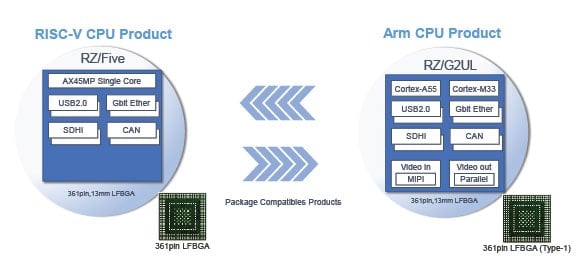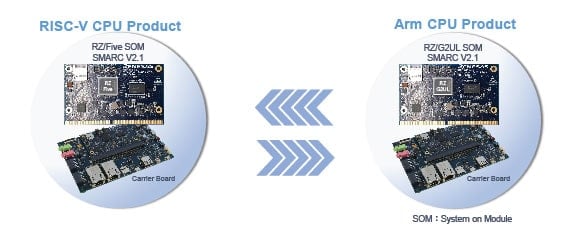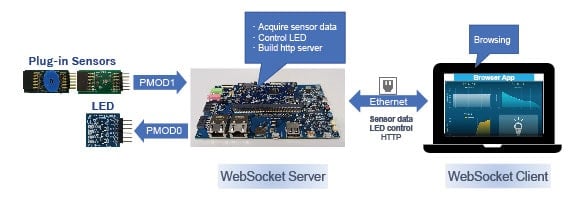It is challenging to easily and rapidly port an application developed on an Arm® CPU device (Board & S/W) to a RISC-V CPU device.
So, what kind of challenges exist when developing an application across different CPUs?
There are many cases where applications are developed exclusively for the target system in embedded system development. Below are the main issues that need to be solved:
- Hardware and applications tend to be tightly coupled
- Peripherals may vary from one system to another, requiring modification of the application to match new ones
- Possibility of incompatible general-purposes programs such as middleware
RZ/Five can overcome these problems together with RZ/G2UL microprocessor (MPU) equipped with Arm CPU.
Pin-to-Pin Compatibility and SMARC Compliant Module Board
Both RZ/Five MPU and RZ/G2UL MPU are pin-to-pin compatible devices, and uses SMARC compliant evaluation board kit that consists of a module board (SOM: System On Module) and a carrier board, providing an environment with minimal differences in hardware and peripherals. This environment enables the developed application to easily migrate between Arm and RISC-V CPU devices accelerating scaling of development.


Board Support Package (BSP)

This BSP consists of a Linux Kernel (CIP Kernel) + Drivers (Driver + Loader) + basic software libraries that operate on the SMARC-compliant module board. The differences from the CPU are indicated in red in Figure 3, which includes the Kernel and the Drivers. Therefore, the application can be used simply by rebuilding the application using the toolchain with minimal source code changes. In this way, users who develop an application using either the RISC-V based RZ/Five or the Arm based RZ/G2UL can easily port their development across CPU architectures.
The IoT Edge Demo with multiple sensors and LED demo developed by Renesas is based on SMARC system for single-core RISC-V MPU winning combination, and uses the SMARC-compliant module board and BSP for both RZ/Five and RZ/G2UL. This demo shows that information from multiple sensor data is acquired, sent to a PC, and displayed in real time on the PC.

For demo development, after porting the demo to RZ/G2UL, it was then ported to RZ/Five which requires 3 full working days. However, by using both RZ/Five and RZ/G2UL, the inter-migration porting can be completed at a shorter time, requiring smaller number of resources.
For more information, visit www.renesas.com/rzfive-evk
